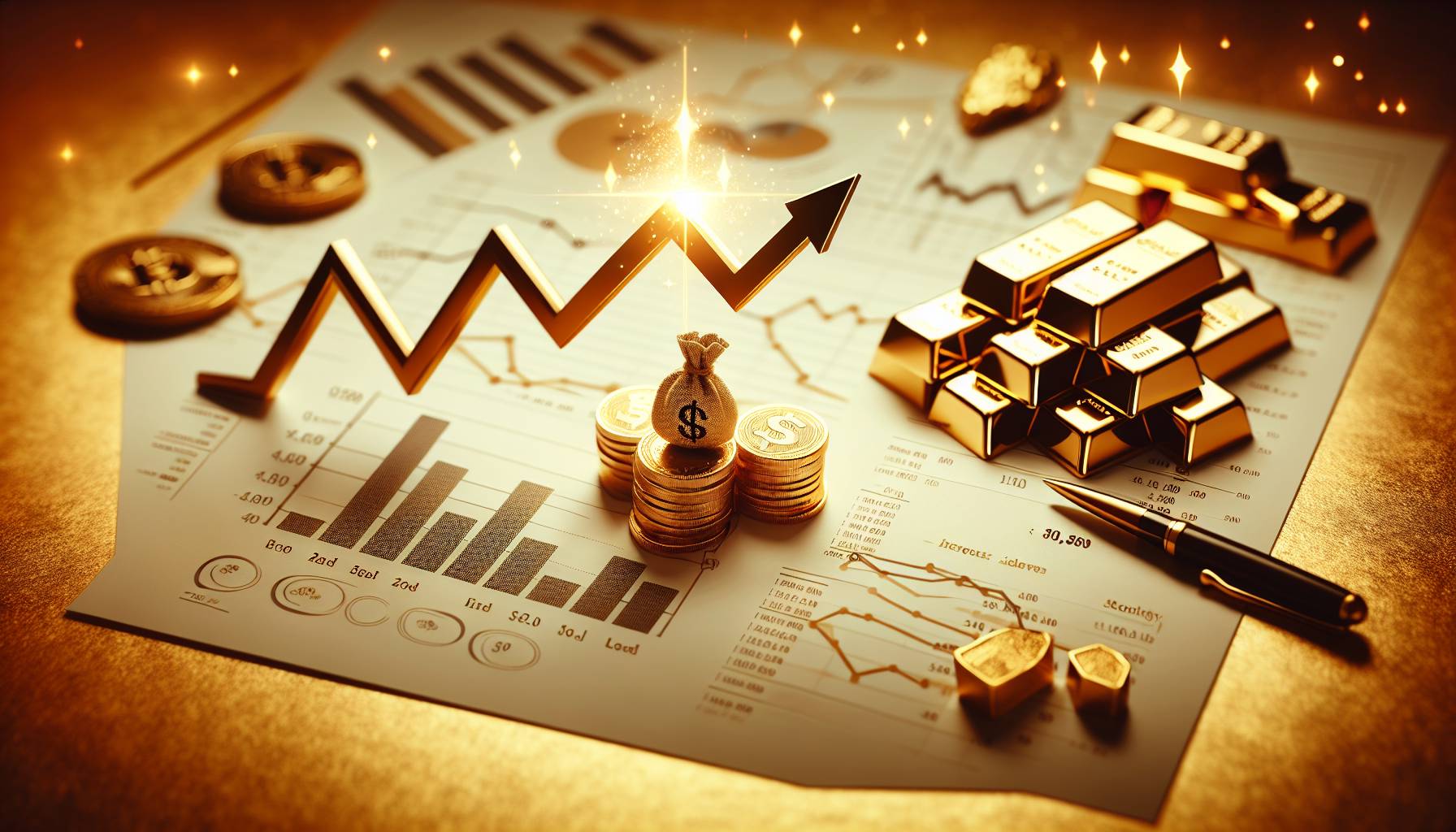factors influencing the surge in gold prices
In early August, gold prices experienced a notable surge, climbing approximately 2.37%. Several factors contributed to this increase, with trade uncertainties and weaker economic data from the United States playing pivotal roles. Investors often turn to gold as a safe-haven asset during times of economic instability, and the recent geopolitical tensions have heightened this trend.
One of the primary drivers of the surge was the ongoing trade disputes, which have created a climate of uncertainty in global markets. As negotiations between major economies falter, the potential for tariffs and trade barriers has led investors to seek refuge in gold, which is traditionally viewed as a stable store of value.
Additionally, the release of weaker-than-expected economic data from the United States has further fueled the rise in gold prices. Indicators such as manufacturing output and consumer spending have shown signs of slowing, prompting concerns about the health of the US economy. This has led to increased speculation that the Federal Reserve might adopt a more dovish monetary policy stance, potentially lowering interest rates, which would make gold more attractive as an investment.
Moreover, the depreciation of the US dollar has also played a significant role in the upward movement of gold prices. As the dollar weakens, gold becomes cheaper for investors holding other currencies, thereby increasing its demand. This dynamic has been particularly influential in the recent price surge, as currency fluctuations continue to impact investor sentiment.
The combination of trade uncertainties, economic data, and currency movements has created a perfect storm for the rise in gold prices, reflecting the complex interplay of global economic factors influencing investor behavior.
impact of trade uncertainties on the market
The impact of trade uncertainties on the market has been profound, particularly in the context of the ongoing tensions between major global economies. These uncertainties have led to increased volatility in financial markets, as investors grapple with the potential implications of disrupted trade flows and the imposition of tariffs. The unpredictability surrounding trade negotiations has made it challenging for businesses to plan for the future, leading to a cautious approach in investment and spending.
As a result, many investors have turned to gold as a hedge against the risks associated with trade disputes. Gold is often perceived as a safe-haven asset, providing a store of value during times of economic turmoil. The heightened demand for gold amidst these uncertainties has contributed to its price surge, as investors seek to protect their portfolios from potential losses in other asset classes.
Furthermore, the ripple effects of trade tensions have been felt across various sectors, with industries reliant on global supply chains experiencing disruptions. This has led to concerns about the broader economic impact, as companies face increased costs and potential declines in profitability. The uncertainty has also affected consumer confidence, with spending patterns potentially shifting in response to perceived economic threats.
In this environment, central banks around the world have been closely monitoring the situation, with some considering policy adjustments to mitigate the impact of trade uncertainties. The potential for changes in monetary policy has added another layer of complexity to the market, influencing investor decisions and contributing to the dynamic landscape of gold prices.
analysis of US economic data and its effects
The recent surge in gold prices can be attributed in part to the analysis of US economic data, which has revealed several concerning trends. Key economic indicators, such as manufacturing output and consumer spending, have shown signs of deceleration, raising alarms about the overall health of the US economy. This slowdown has prompted investors to reassess their strategies, with many turning to gold as a more secure investment option.
Manufacturing output, a critical component of economic growth, has been under pressure due to various factors, including trade tensions and supply chain disruptions. The decline in manufacturing activity has been more pronounced than anticipated, suggesting potential challenges ahead for the industrial sector. This has led to increased speculation about the possibility of a broader economic downturn, further driving investors towards gold.
Consumer spending, another vital pillar of the US economy, has also exhibited signs of weakening. With consumer confidence wavering amidst economic uncertainties, spending patterns have shifted, impacting retail sales and overall economic momentum. The slowdown in consumer activity has raised concerns about the sustainability of economic growth, prompting a reevaluation of investment portfolios.
In response to these economic signals, there is growing anticipation that the Federal Reserve may adopt a more accommodative monetary policy stance. The potential for interest rate cuts has made gold more attractive, as lower rates reduce the opportunity cost of holding non-yielding assets like gold. This expectation has been a significant factor in the recent price surge, as investors position themselves for potential monetary easing.
Additionally, the depreciation of the US dollar has amplified the effects of these economic trends on gold prices. As the dollar weakens, gold becomes more affordable for investors using other currencies, increasing its appeal as a safe-haven asset. This currency dynamic has played a crucial role in the recent upward trajectory of gold prices, reflecting the interconnected nature of global financial markets.
The analysis of US economic data highlights the complex interplay of factors influencing gold prices, underscoring the importance of monitoring economic indicators and central bank policies in shaping market dynamics.
Gold price surge in August
In early August, gold prices experienced a notable surge, climbing approximately 2.37%. This increase was primarily driven by heightened trade uncertainties and weaker economic data emerging from the United States. Investors, seeking a safe haven amidst global market volatility, turned to gold, pushing its value upward. The precious metal’s performance during this period highlighted its enduring appeal as a hedge against economic instability.
As geopolitical tensions and economic concerns continued to unsettle markets, gold’s allure as a stable investment option became increasingly apparent. The August surge underscored the metal’s role in diversifying portfolios and protecting wealth, particularly during times of financial uncertainty. For Australian investors, this trend offered a timely reminder of gold’s potential to deliver returns even when other asset classes falter.
Impact of US economic data on gold prices
The recent uptick in gold prices can be closely linked to the release of weaker-than-expected economic data from the United States. Key indicators, such as employment figures and manufacturing output, showed signs of slowing growth, prompting concerns about the overall health of the US economy. This economic backdrop has led to increased speculation about potential interest rate cuts by the Federal Reserve, further influencing investor behavior.
As the US dollar weakened in response to these economic signals, gold became a more attractive option for investors looking to preserve their capital. The inverse relationship between the dollar and gold prices played a crucial role in the metal’s recent performance. For Australian investors, the fluctuations in the US economy serve as a critical factor in assessing the potential benefits of holding gold within their investment portfolios.
Moreover, the ongoing trade tensions between the US and its trading partners have added another layer of complexity to the economic landscape. These uncertainties have heightened the appeal of gold as a hedge against potential market disruptions. As investors navigate these turbulent times, the strategic inclusion of gold can offer a measure of stability and security, reinforcing its status as a valuable component of a diversified investment strategy.

